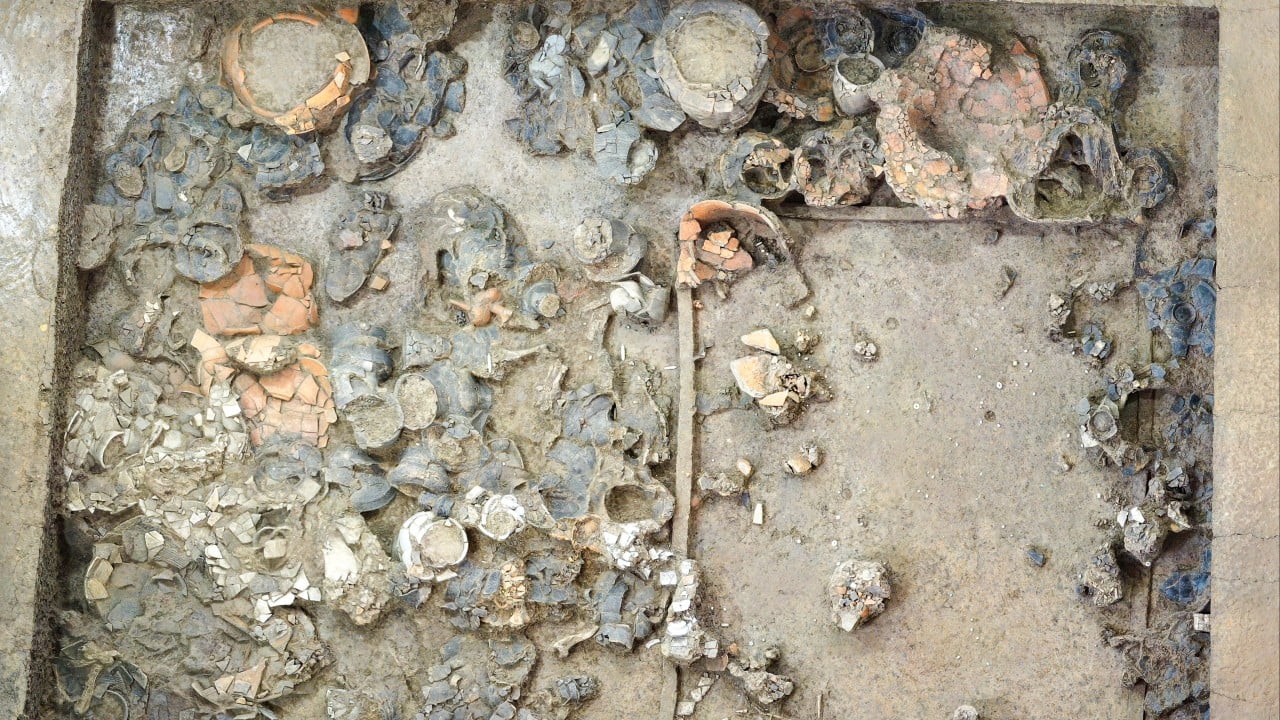Chinese archaeologists have unearthed a tomb dating back some 5,000 years, which they believe is older than any similar discovery and that may belong to a prehistoric king.
Advertisement
The tomb, in central China’s Henan province, is part of a burial site that was discovered in late 2021 at Wangzhuang village, in the county-level city of Yongcheng, and which has been yielding extraordinary finds since last year.
State news agency Xinhua said on Monday that the latest tomb, numbered M27, is an “extra-large” structure with a total area of more than 17 square metres (183 sq ft) featuring both internal and external coffins.
Archaeologists uncovered a wealth of grave items, including more than 100 pieces of pottery and nearly 200 small jade ornaments, as well as bone tools and animal remains such as pig mandibles, which symbolise wealth, according to Xinhua.
Zhu Guanghua, an associate professor at Capital Normal University’s School of History who was involved in the dig, said the latest discovery “indicates that the Wangzhuang ruins are not an ordinary settlement, but rather the capital of a prehistoric kingdom”.
Advertisement
The ancient burial complex is estimated to cover a total area of 120,000 square metres (12 hectares), stretching 400 metres (1,312ft) from north to south and 300 metres (984ft) from east to west.
Villagers were refurbishing Wangzhuang’s ponds when they stumbled upon the first of a series of tombs in the side of a pit, with a number of jade rings, pendants and discs, as well as turquoise ornaments, bone arrowheads and pottery.

